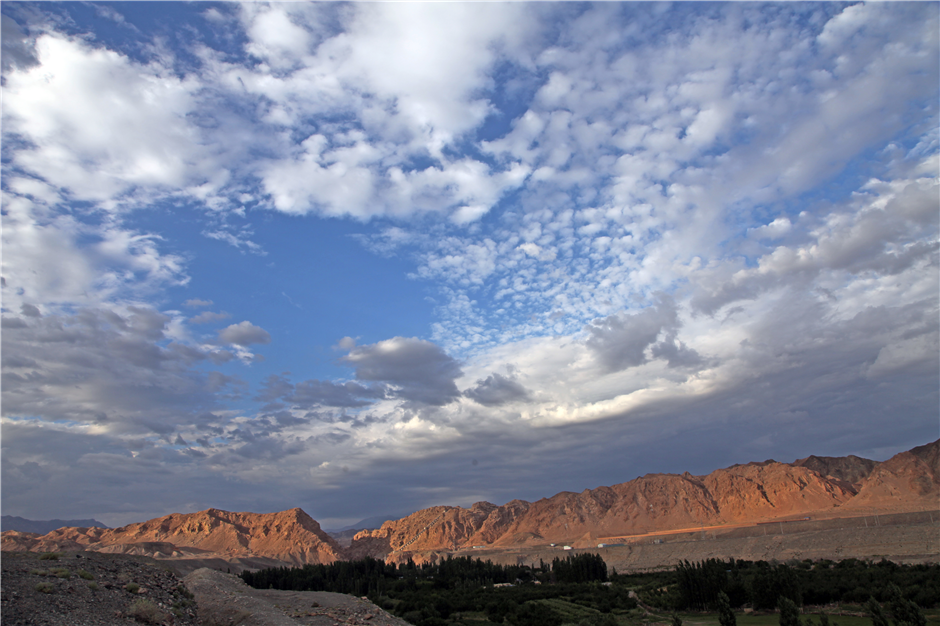Trees take root at deadly mountain pass

A general view of the Gobi Desert, July 21, 2017.
It’s been 20 years since Gong Zhengxiu came to work as a ranger at a notorious mountain pass in northwest China’s Xinjiang Uygur Autonomous Region.
The memory of what he saw is still fresh.
“When I first came here, there was nothing except a vast expanse of Gobi Desert,” Gong said, while standing near a windbreak forest, with lush greenery behind him. “Nothing grew on the soil two decades ago, but now things have changed.”
Laofengkou sits on the border between China and Kazakhstan.
It used to be known as “the deadly pass” for its extreme windy weather conditions. For centuries, strong winds blew all year around through its 20-kilometer length.
The harsh weather caused damage and suffering to local residents. Records show that 26 people got lost and were later frozen to death in a heavy storm in the winter of 1966. Thousands of livestock were blown away beyond the border in the winter of 1977, and many rescuers got frostbite.
Residents in Tacheng have tried various methods to retrieve the land from the strong winds. They set up enclosures, built mud walls and dug out snow-storage caves to hold back the strong winds, but to no avail.
With a determination to lessen the damage, local authorities in Xinjiang in 1993 launched an ecological project to harness the harsh environment in Laofengkou. Gong was sent to work on the project from his hometown on the Yangtze River. He has witnessed many changes since.
Local people were enthusiastic about foresting the border town area.
For middle-aged people in Tacheng, memories of their school lives are mostly about planting trees.
Thanks to their work, the previously deadly pass of Laofengkou has turned into an oasis covering an area of some 8,400 hectares. Man-made windbreak forests totaling 28 square kilometers have been planted in the area, offering protection for arable land and pastures.
As time has passed, the barren mountain pass has become greener and attracted many wild animals, such as rabbits, foxes and wild boar.
The local authorities have come up with a number of ideas to make good use of the wind for power generation and invested in the building of a wind farm in Laofengkou, helping to ease power shortages in the area and, in turn, boosting the local economy.
Laofengkou has now begun a new page in its history, with tall, green trees and a stunning skyline.
For Gong and the other people living in the area, the windy pass has evolved into a land of hope and prosperity.















